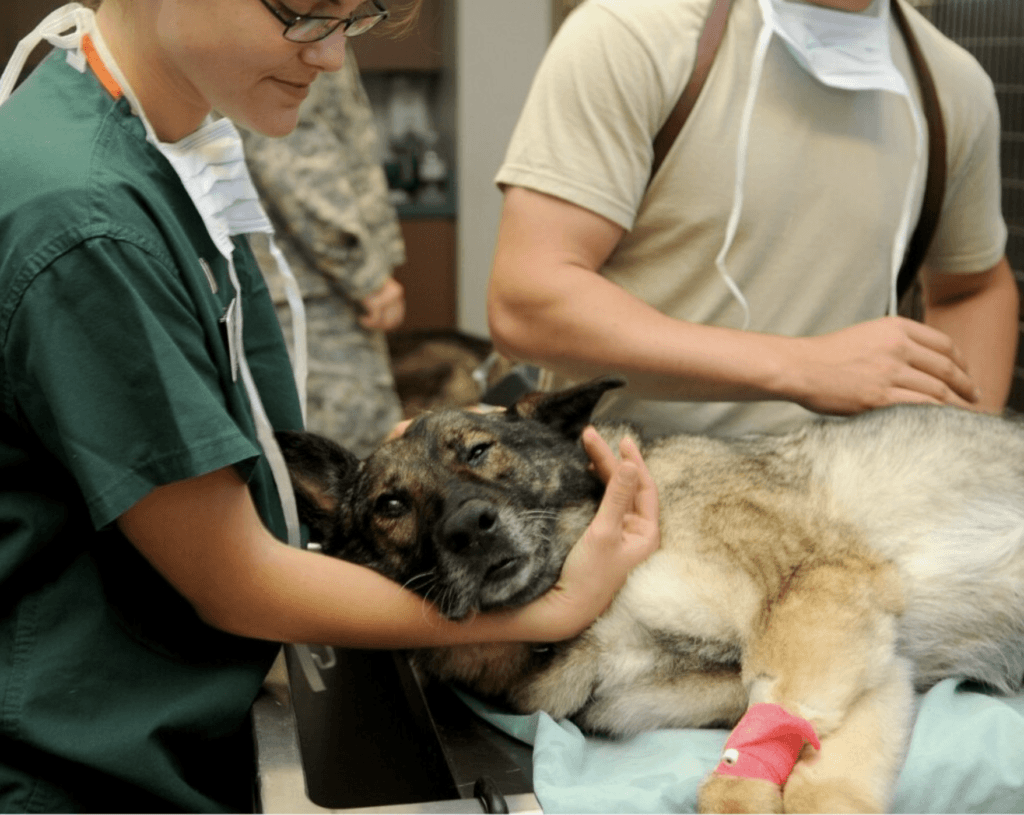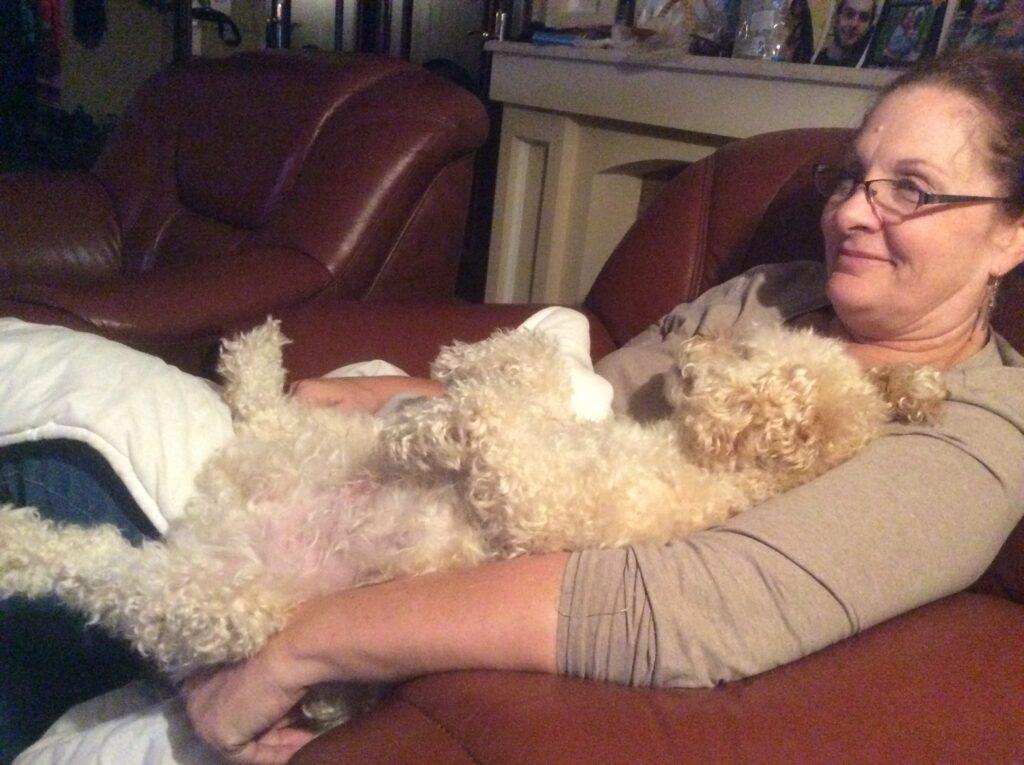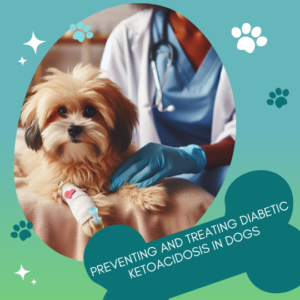Diabetic Ketoacidosis, or DKA, is a severe and potentially life-threatening condition that can affect dogs with diabetes. Essentially, it occurs when a dog’s body starts breaking down fats too quickly due to a lack of insulin, leading to high levels of ketones in the blood. This creates an acidic environment in the bloodstream, which can trigger a series of health problems.

Several factors can cause DKA in dogs. One of the most common triggers is uncontrolled diabetes. When a diabetic dog doesn’t receive enough insulin, their body can’t properly use glucose for energy and instead starts breaking down fat, resulting in ketones. Other contributing factors include infections, certain medications, and underlying health conditions like pancreatitis or kidney disease.
Spotting the early warning signs of DKA can make a huge difference in your dog’s prognosis. Common symptoms include excessive thirst, frequent urination, lethargy, vomiting, and loss of appetite. In more severe cases, you might notice labored breathing, a fruity odor on the breath, or even sudden collapse. It’s super important to act quickly if you notice any of these signs because DKA progresses rapidly and requires urgent medical intervention.
Our Close Call with DKA
The year we were in the US, we had a scare with Brady. Something made him sick. We think he may have had an infection of some sort, but whatever it was, he was not feeling good and it came on quickly. One morning he did not finish his breakfast. That was an immediate red flag. Brady anxiously stands watching us when we prepare his meals and eats with enthusiasm, often pushing his bowl around the kitchen making sure he licks the bowl clean. Any time he doesn’t eat, I know something is wrong. My first response is always to test his blood sugar. That morning, it was very high, so I called the vet. When we got there she tested his urine and said that he had a low level of ketones. She thought he would need to be hospitalized. In fact, she was encouraging us to put him in the hospital right then. We were determined to do all we could to keep him with us, where he felt safe and loved, so she told us what we needed to do and let us take him home.

He was lethargic. He wasn’t drinking or eating. We monitored his glucose levels and administered glucose according to our vet’s instructions. I sat with him next to me or in my lap for 36 hours. I got him to drink water and eat out of my hand. Boiled, skinless chicken is Brady’s favorite food, so that was all he ate for several days. We were lucky. Getting him to the vet right away made the difference. He had just a few ketones in his urine and it made him feel that bad. Brady did not have DKA, but he was headed that way. If we had not had the time or inclination to baby him like that, he would’ve been in the hospital, or worse. Ketoacidosis gets bad fast. It is nothing to play with.
Immediate veterinary care is non-negotiable when dealing with DKA. If you suspect your dog is experiencing this condition, get them to a vet as soon as possible. The sooner treatment starts, the better the chances of a full recovery.
Effective Treatment for Diabetic Ketoacidosis
When DKA strikes, it is a medical emergency that demands immediate veterinary care.

Insulin therapy is essential in managing DKA. Administering insulin helps bring blood sugar levels down and prevents further ketone production. This treatment isn’t just about stopping the immediate crisis; it is the foundation for the long-term management of your dog’s diabetes.
Addressing underlying causes is another key focus. It’s important to know if it’s an infection, another illness, or an issue with managing your dog’s diabetes. When you know what happened, you can prevent future episodes of DKA.
Monitoring and correcting electrolyte imbalances will be an important part of your dog’s hospital treatment because DKA throws off levels of potassium, sodium, and other vital electrolytes. Vets use blood tests to check these levels continuously during treatment and adjust medications or supplements to keep everything in balance and get your dog back to you.
Intravenous (IV) fluids will also be a component of the treatment for DKA. These fluids help rehydrate your dog, flush out ketones, and restore electrolyte balance. In severe cases, IV fluids can be a lifesaver, stabilizing your dog’s condition so other treatments can be more effective.
Ongoing monitoring and follow-up care once your dog is stable need to be part of the overall treatment plan. This should include regular blood tests and vet visits to keep track of their condition.
Prevention Strategies to Keep Your Dog Healthy
We all know that the best treatment is prevention. Keeping your diabetic dog healthy and preventing Diabetic Ketoacidosis (DKA) is possible with the right strategies. The goal is to maintain control over their blood glucose levels and keep any underlying conditions in check. Here are the key preventive measures.
Consistent blood glucose monitoring is a cornerstone of managing diabetes in dogs. Regularly checking your dog’s blood sugar levels allows you to spot any fluctuations early on and take necessary actions to correct them. I recommend Pet Diabetes Tracker, a free, user-friendly app where you can keep track of your dog’s glucose levels and other important health data.
Proper insulin administration is another critical factor. Be sure you’re giving the correct dosage*** prescribed by your vet and at the recommended times. Changing doses without professional advice can cause more harm than good, so always consult your vet before making any adjustments.
***In the US be extra careful you get the right-sized needle for the kind of insulin you use for your dog.
- U100 needles if you’re using human insulin.
- U40 needles if you are using insulin specifically for pets.
- You don’t want to use the wrong needle. It can be life-threatening.

Diet management plays a significant role in keeping diabetes under control. Feeding your dog a balanced diet that includes the appropriate mix of protein, fiber, and carbohydrates helps maintain steady blood glucose levels. We feed Brady a prescription dog food with supplements.
Avoid giving your dog table scraps or treats high in sugar. This is a good practice for all dogs, but it is especially important for diabetic dogs because even small treats can cause spikes in their blood sugar.
We give Brady small treats when he comes in from a walk. We started it when we were house-training him and continued because it feels harmless and he looks forward to it. When we were first adjusting to life with diabetes, we initially did not change his treats. After struggling to manage his glucose, we realized we needed to give him diabetic treats. That made a difference. Everything they eat matters.
Regular veterinary checkups provide opportunities for early detection of potential health issues that could lead to DKA. Routine blood tests and screenings help monitor your dog’s diabetic condition and ensure everything is on track. Your vet can also make adjustments to their treatment plan if necessary.
Keeping your dog hydrated is often overlooked but very important. Diabetic dogs can become dehydrated more easily, which can worsen their condition. Make sure your dog always has access to clean, fresh water, especially during hot weather, and encourage them to drink regularly by keeping the water clean and fresh.
When Brady was sick, the most worrying symptom he had was that he was not drinking. When I got him to drink out of my hand he started to get better.
In the heat of Thailand, we monitor his water consumption carefully. If we go to a park we bring water for him and offer him some regularly on our walks, just like we do for ourselves.
Stress management is also underestimated but important for your diabetic dog’s health. Stress affects blood sugar levels and overall well-being. When your dog’s environment is calm and predictable, with plenty of exercise, and full of quality time with you, their life will be low-stress and their diabetes will be stable.
By following these preventive strategies, you can significantly reduce the risk of DKA and ensure your dog stays happy and healthy.

Please share your experiences. I’m here to answer questions, celebrate your successes, and help with the challenges of life with your diabetic dog. I look forward to hearing from you in the comments below.

